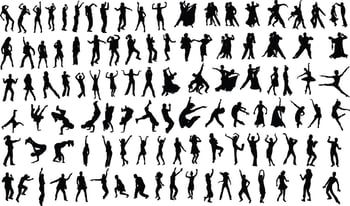
There’s something about a high five, something that makes you instantly feel joy, excitement, and quite pumped.
I felt this recently at the end of a spinning class when the teacher instructed us to turn to our neighbors and high five them. Now I didn’t know either of my neighbors, but even so I was amazed at the difference this action made afterwards as I slowly walked (hobbled) out of class. Instead of thinking about how tired I was or how much I was going to hurt in the morning, instead all I could do was think of how great I felt and what an accomplishment it was to have finished the class.
And then I thought, was this really just because of the high five? Well, maybe.
According to a study conducted by the University of California-Berkeley of high fives exchanged by National Basketball Association players, high fives “promote cooperation between people, communicate distinct emotions, soothe in times of stress, and are used to make inferences of warmth and trust.” They also found that the amount of high fives exchanged clearly tied to the performance of the group. The more the team bonded through high fives, the more success they achieved.
So a high five seems like a pretty powerful tool. This made me wonder, is the same true with our employee recognition programs, specifically our peer-to-peer recognition programs?
Couldn’t we say that peer-to-peer employee recognition is in fact a high five to our colleagues and teammates?
And if so, wouldn’t they achieve the same results? It makes sense to me, as I believe that a successful employee recognition program delivers these similar results, such as promoting cooperation, building trust and creating a more productive and successful team. In fact, according to a study by SHRM, peer-to-peer recognition is 35.7% more likely to have a positive impact on financial results than manager-only recognition.

So how can you get these results and create an effective peer-to-peer recognition program? I’ve put in place many recognition initiatives inspired by countless factors, but since I was inspired by my spinning class, let’s put a new spin on it (pun intended):
Get going
Spinning classes can seem intimidating, but the biggest piece of advice I have is to just take a deep breath and get going — just do it! Join others, and once you do, they aren’t as bad as they seem (trust me!). The same is true with recognition, it may seem a bit daunting to put in place a peer-to-peer recognition program, but it really isn’t that difficult to do. Here are two options to get started:
Online: Online recognition platforms make it easy and cost effective for you to put in place a peer-to-peer recognition program. The company you select can help you set it up and communicate it to your employees, and as reward programs go, it’s one of the easier ones to put in place.
Paper-based: If an online platform isn’t on your HR roadmap, you can always start out with a paper-based one. It can be as simple as having slips of paper for employees to write their recognition comments and either hand it directly to the employee, put it on a recognition wall, or put in a recognition bowl where they can be taken out and read at the appropriate time. (Find more innovative ways to recognize in my colleague's blog post.)
Stay aligned
If you think of a spinning class, everyone is working towards the same goals of doing the best they can during the class and ultimately finishing the class. With recognition programs it’s also important to have alignment, and in this case it’s normally with your company values and/or objectives which support the company. By doing this you’re giving your employees high fives at the appropriate times, encouraging and rewarding them to behave in the right way, aligning with what will best drive and support your business.

Mix it up
Keep it interesting by changing and mixing up your employee recognition programs. Think of a spinning class, where the teacher changes the moves and the tempo to keep it interesting as well as making it easier to reach your goals. It’s critical to do the same thing with recognition programs, for they can get boring, stale and ineffective if you don’t change them from time to time. For example, at Reward Gateway the core of our peer-to-peer recognition program is our company values, but we do change the other elements quite often to include ones focussed on business priorities, ones aligned to a certain time of the year, or just ones which are a bit of fun. Together they make sure that employees enjoy and engage with the program, making it more effective for the employees and the business.
Get social
How could you write anything these days without talking about the power of using social media? With social platforms on the rise, and many forming an important part of a company’s strategy and "toolkit," it should be considered for peer-to-peer recognition programs. A note to make is that some providers are including this as part of their online platform, so do check if this is something you can do at your company.
Keep measuring
When participating in a spinning class you’re constantly measuring how well you are doing. Have you made it through each song, have you been able to push yourself to work harder? With peer-to-peer recognition programs it’s also critical to measure, as you want to make sure that the program is doing what you need it to do, with your employees participating and acting in a way to achieve the program’s overall objectives. If it is, keep going as you are, but if it isn’t, as with spinning, adjust your controls (program) to change it to be more effective. If you don’t do this you could be wasting valuable time and money, "riding" in the wrong direction.
The last thing I can say about high fives is that while they feel amazing and deliver a “you got this!” attitude, every high five needs its purpose. So think through why and how you’re delivering your high-fives, and you’ll never miss! If you’re ready to get pedaling on your own recognition program, we’re here to help. Get in touch with the team to chat about your own recognition strategy below.

 Debra Corey
Debra Corey


